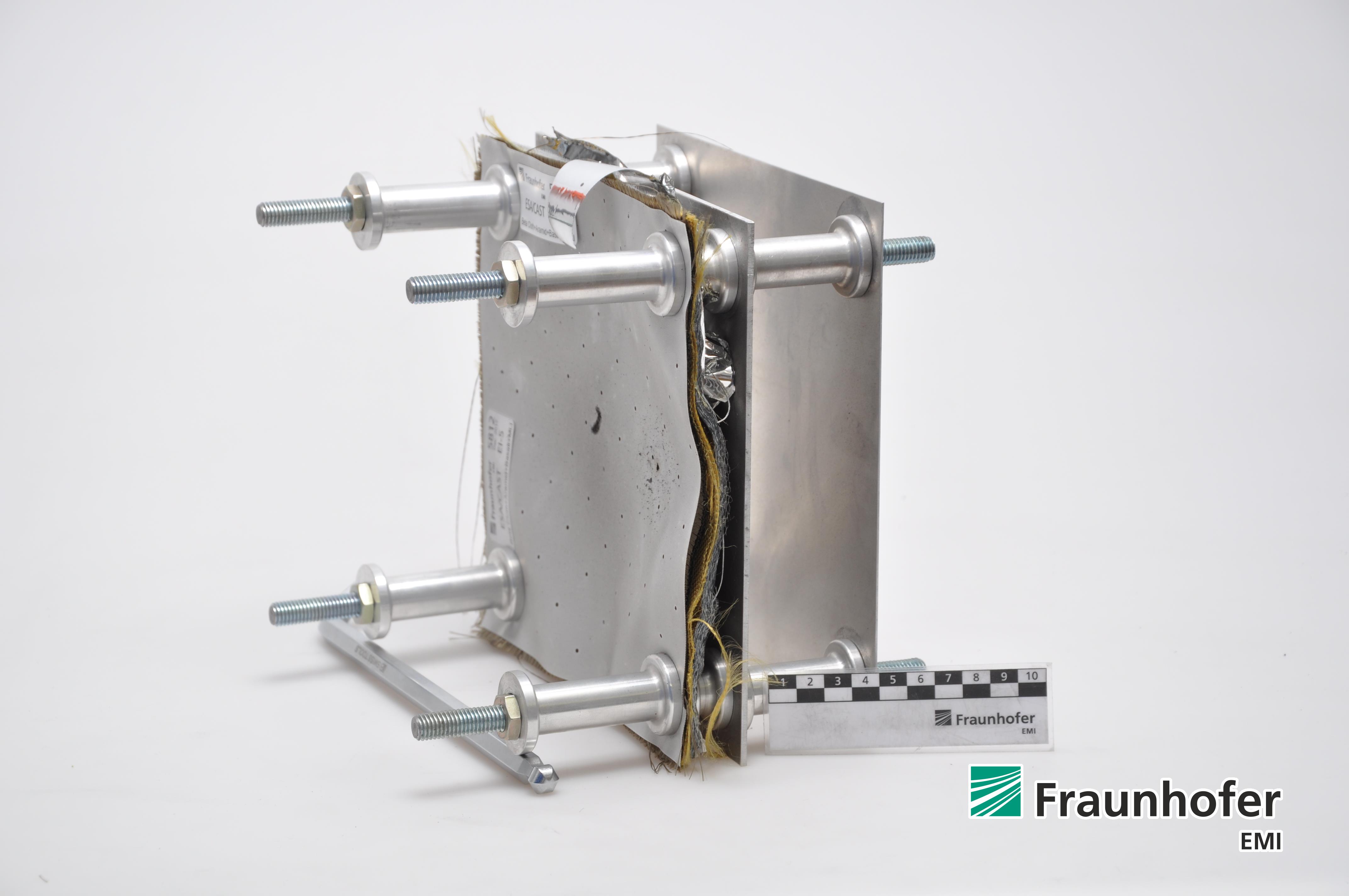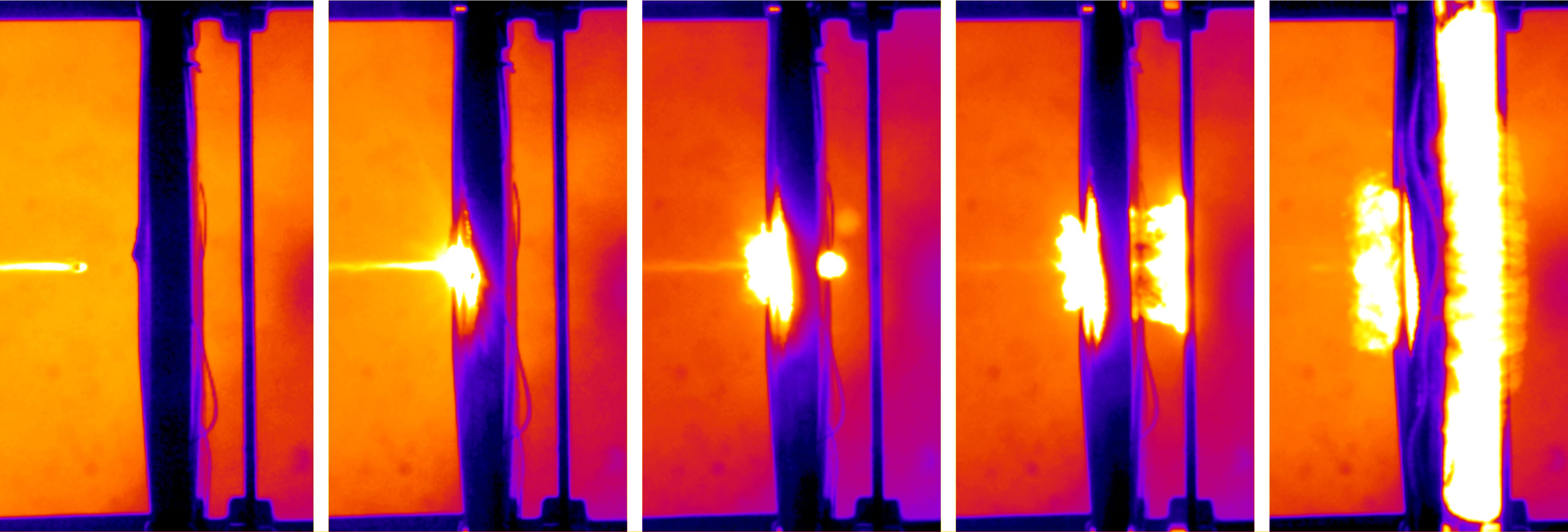Impact tests onto protective shields for the planned chinese space station TianGong

The experimental simulation of the hypervelocity impact of space debris and micrometeoroids onto spacecraft systems is a special expertise of Fraunhofer EMI. Using two-stage light gas guns, objects with sizes ranging from micrometers to centimeters are accelerated to impact velocities of up to ten kilometers per second.
These experimental capacities, which have for example been employed in the development of the protective shield of the ISS European Columbus module, were again sought-after in 2018 for the protective shield of the planned Chinese space station TianGong. The background for this project is a cooperation between the European Space Agency ESA and the Chinese Academy of Space Technology CAST. For the Chinese scientists, we at EMI have experimentally analyzed their protective shield concept for the manned space station. The goal was to examine and to characterize the protective capability of the shield for various impact conditions. In fifteen experiments, the protective shields were tested. Based on the results, dedicated damage equations for the description of the protective behavior of the shields were then deduced.
